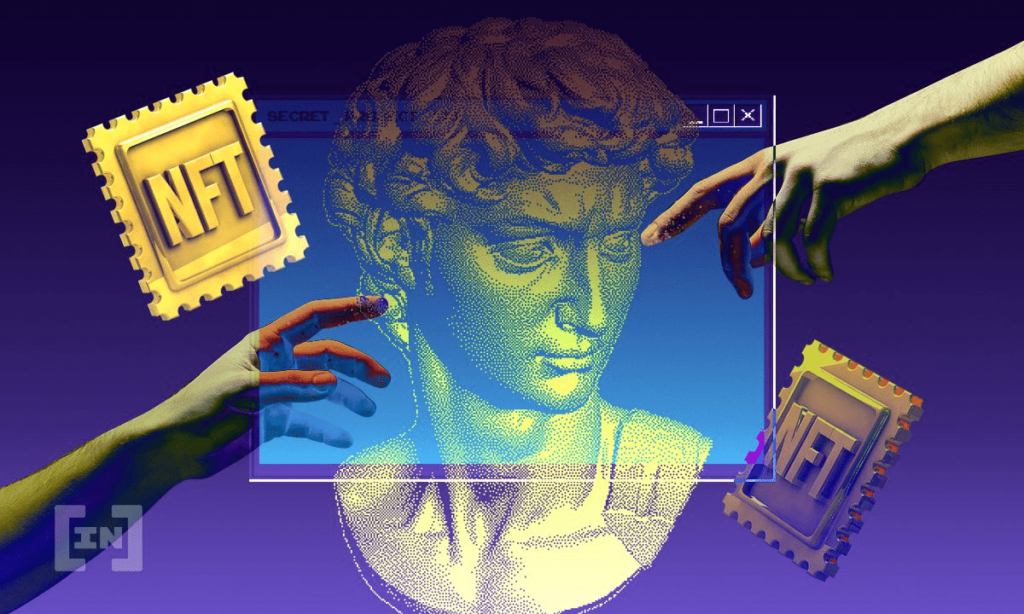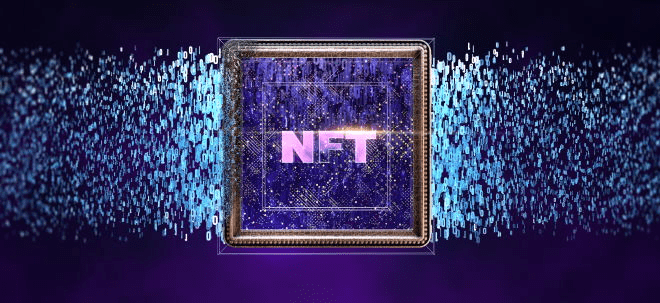A new Ethereum token standard called ERC-4907 reached the final stages of development; one which will allow the user to loan out their non-fungible token (NFT). Before the ERC-4907, every time you transferred the NFT, you lost your ownership. But by splitting up ownership and usage rights, it’s now possible for NFTs to be loaned out and rented in permissionless ways.
Non-fungible tokens, or NFTs, are exploding in popularity these days. People are paying big money for these unique collectible cryptocurrency assets. One NFT by the digital artist known as Beeple sold for a jaw-dropping $69 million in early 2021, while many others have fetched multimillion-dollar sales prices.
The potential for big money is leading more people to create NFTs in the hope of cashing in on the current craze. Here’s a step-by-step guide on how to make (i.e., mint) and sell an NFT (see NFT Market Review).

ERC-4907 adds a new role in the NFT standard, splitting who is the owner and who is the user of an NFT – making “renting” possible. The renter can use the NFT until the loan period expires, automatically sending the NFT back to its owner.
To be sure, rentable NFTs are not yet officially available. Reaching “final” status means that the Ethereum proposal, or project aiming to improve the Ethereum blockchain, can no longer be updated. Other builders can now incorporate that proposal into smart contracts without fear of the developers later changing it.
Once built into smart contracts, rentable NFTs have the potential to disrupt blockchain gaming, metaverse land sales, blockchain-based media platforms and more.
How to make a rentable NFT?

Most of the NFTs with the highest profiles, such as Bored Ape Yacht Club, CryptoPunks and Azuki, were either minted or wrapped in the ERC-721 token standard, which represents ownership of a digital or physical asset that is verified on the Ethereum blockchain.
These token standards necessitate that the owner of the NFT may use that digital asset. In order to use, say, Axie #5 in the play-to-earn game Axie Infinity, you must have that NFT in your wallet. To have the NFT in your wallet, you must have either minted that Axie or purchased it on a secondary market.
In other words, purchasing that Axie precedes your ability to use it — as it would for other NFTs minted under ERC-721.
NFTs minted under ERC-4907 token standard split ownership and usage rights with a digital asset.
The ERC-4907 token standard can be wrapped around existing NFTs minted under ERC-721 or other Ethereum standards, allowing the wrapped NFT to be read by the smart contracts of rentable NFT marketplaces, and be loaned or rented as if it were originally minted under the ERC-4907 standard.
In addition, the owner can set time parameters for which an individual may use their rented NFT. When that time ends, the user can no longer use that NFT, and the rented NFT reverts back in the hands of the original owner — without the owner having to manually ask for their asset back.
Where rentable NFTs can go?

Sharing the usage rights of an NFT is not new. Gaming guilds purchase NFTs that are prohibitively expensive for most players and loan them out in exchange for a portion of the player’s profits. Such guilds, like Yield Guild Games (YGG), emerged in the late summer and early fall last year for Axie Infinity, when the game’s popularity was at its height.
When the owner assigns NFT’s rights to the guild, it’s very risky. You have to trust the guild. If the guild disappears, then you lose your assets.
Blockchain GameFi Market ERC-4907 allows users to create a sort of do-it-yourself guild out of valuable NFTs that they already own, in which loaners can charge a rental fee and users can keep profits earned from gaming. And they can do it in a trustless and permissionless way by leveraging Ethereum smart contracts.
Key Features of NFT
- Digital Asset – NFT is a digital asset that represents Internet collectibles like art, music, and games with an authentic certificate created by blockchain technology that underlies Cryptocurrency.
- Unique – It cannot be forged or otherwise manipulated.
- Exchange – NFT exchanges take place with cryptocurrencies such as Bitcoin on specialist sites.
While this may seem like a threat to guild business models, Double Protocol considers blockchain-based gaming guilds to be market makers — entities that buy and sell securities and often provide liquidity — for rentable NFTs. And established guild organizations such as YGG can leverage ERC-4907 make their guilds more decentralized.
Double Protocol considers gaming guilds as big stakeholders in the rentable NFT marketplace and thus wants to cater to them.
This could include creating tools where guild organizations can create new guilds through one click of a button, as well as ways to control how gaming earnings are split between the loaner and renter.
Rentable NFTs can also augment metaverse land usage. Lareina notes that metaverse land owners can rent out their property for events. And should an investor have purchased a metaverse land parcel but lack the capacity to build on top of it, they can rent out that land to another party to build it out and earn revenue through rent, protecting any other property they own by removing it during the rental period and adding it back when the rental period is over.
This blockchain technology can also facilitate web3-based library loans or free trials of a product, as well as other areas. In all, rentable NFTs unlock a new marketplace of usage rights of NFTs now that they’ve been decoupled from ownership.
What is an NFT? What does NFT stand for?

“Non-fungible” more or less means that it’s unique and can’t be replaced with something else. For example, a bitcoin is fungible — trade one for another bitcoin, and you’ll have exactly the same thing.
A one-of-a-kind trading card, however, is non-fungible. If you traded it for a different card, you’d have something completely different.
One phenomenon that has challenged the way we think of ownership is NFTs (non-fungible tokens). They have a blockchain-based approach to proving ownership and authenticity.
While they aren’t exactly a new concept, they’ve entered the public realm relatively recently when fully digital artworks were auctioned at mind-boggling prices.
Like Bitcoin or Ethereum. The term NFT clearly represents it can neither be replaced nor interchanged because it has unique properties. Physical currency and cryptocurrency are fungible, which means that they can be traded or exchanged for one another.
Innovation comes with adopters and detractors. Whatever side you’re on, we genuinely believe that NFTs are an exciting new way of digital ownership, and we should at the very least draw inspiration from it, whether they see mass adoption or not.
NFTs are currently taking the digital art and collectables world by storm. Just as everyone worldwide believed Bitcoin was the digital answer to currency, NFTs are now pitched as the digital answer to collectibles. Asa result, digital artists are seeing their lives changing thanks to the massive sales to a new crypto audience.
How Does NFT Work?
- The majority of NFTs reside on the Ethereum cryptocurrency’s blockchain, a distributed public ledger that records transactions.
- NFTs are individual tokens with valuable information stored in them.
- Because they hold a value primarily set by the market and demand, they can be bought and sold just like other physical types of art.
- NFTs’ unique data makes it easy to verify and validate their ownership and the transfer of tokens between owners.
At a very high level, most NFTs are part of the Ethereum blockchain, though other blockchains have implemented their own version of NFTs. Ethereum is a cryptocurrency, like bitcoin or dogecoin, but its blockchain also keeps track of who’s holding and trading NFTs.
What is NFT Used For?

People interested in Crypto-trading and people who like to collect artwork often use NFTs. Other than that, it has some other uses too like:
- Digital Content – The most significant use of NFTs today is in digital content. Content creators see their profits enhanced by NFTs, as they power a creator economy where creators have the ownership of their content over to the platforms they use to publicize it.
- Investment and Collaterals – Both NFT and DeFi (Decentralized Finance) share the same infrastructure. DeFi applications let you borrow money by using collateral. NFT and DeFi both work together to explore using NFTs as collateral instead.
- Domain Names – NFTs provide your domain with an easier-to-remember name. This works like a website domain name, making its IP address more memorable and valuable, usually based on length and relevance.
Even celebrities like Snoop Dogg, Shawn Mendes, and Jack Dorsey are taking an interest in the NFT by releasing unique memories and artwork and selling them as securitized NFTs.
One of the most popular non-fungible tokens in recent days is NBA Top Shot, a partnership between Dapper Labs (makers of the CryptoKitties game) and the National Basketball Association (NBA). The NBA licenses individual highlight video reels, among other content, to Dapper Labs, and they digitize the footage and make it available for sale to consumers.
Each reel shows a video clip, such as a famous player’s basketball dunk, some featuring different angles and digital artwork to make them unique. Even if someone made a perfect copy of the video, it can be instantly recognizable as a counterfeit. The venture has already generated $230 million in sales, and the company just also received $305 million in funding from a group that includes Michael Jordan and Kevin Durant.
Why Are NFTs Becoming Popular?

NFTs have actually been around since 2015, but they are now experiencing a boost in popularity thanks to several factors. First, and perhaps most obviously, is the normalization and excitement of cryptocurrencies and the underlying blockchain frameworks. Beyond the technology itself is the combination of fandom, the economics of royalties, and the laws of scarcity. Consumers all want to get in on the opportunity to own unique digital content and potentially hold them as a type of investment.
When someone buys a non-fungible token, they gain ownership of the content, but it can still make its way over the Internet. In this way, an NFT can gain popularity — the more it’s seen online, the more value it develops.
When the asset is sold, the original creator gets a 10 percent cut, with the platform getting a small percentage and the current owner getting the rest of that revenue. Thus, there is potential for ongoing revenue from popular digital assets as they are bought and sold over time.
Authenticity is the name of the game with NFTs. Digital collectibles contain distinguishing information that make them distinct from any other NFT and easily verifiable, thanks to the blockchain. Creating and circulating fake collectibles doesn’t work because each item can be traced back to the original creator or issuer. And, unlike cryptocurrencies, they can’t be directly exchanged with one another (like baseball cards in real life) because no two are the same.
How to Buy NFTs?
Having understood what NFTs are used for and its specific advantages over other cryptocurrencies, you might want to venture into buying NFTs. If so, you will need to acquire some essential items before you do it:
- You’ll need a digital wallet that allows you to store your NFTs and cryptocurrencies.
- Then you need to purchase some cryptocurrency depending on what currencies your NFT provider accepts, most likely Ether. You can use platforms like OpenSea, Coinbase, Kraken, PayPal, etc., to buy cryptocurrencies.
- Once you’ve made your cryptocurrency purchase, you can move it from the exchange to your wallet.
Bear in mind, that many exchanges charge a small percentage of your crypto purchase transaction as fees.
……………









